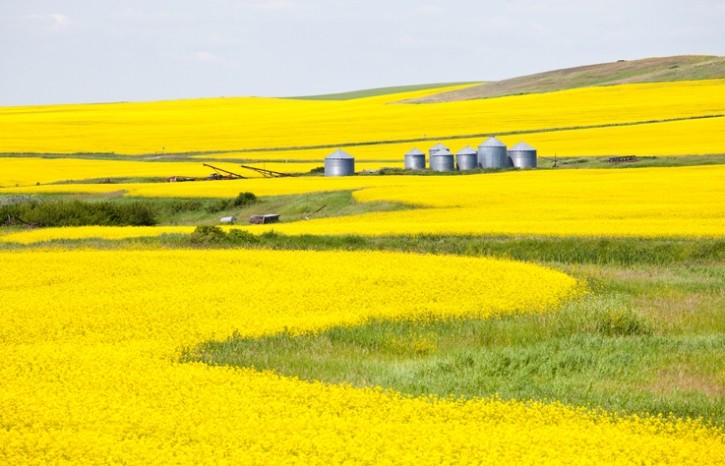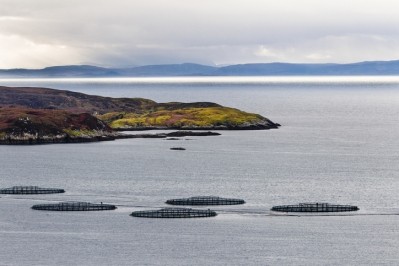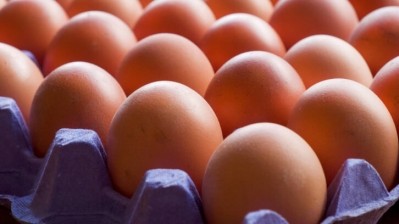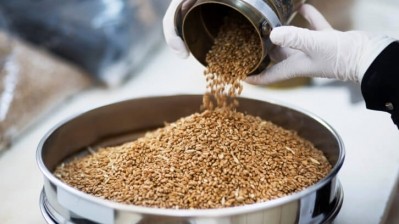Canadian researchers identify canola lines with increased protein and reduced fiber

They are looking to boost the value of the crop and expand the use of canola meal in livestock, poultry, and fish feed.
Canola is second largest oilseed crop in the world after soy. But the meal coming out of it tends to go to the dairy cattle sector due to its low protein content and elevated levels of fiber, which many animals cannot digest.
A National Research Council of Canada (NRC) team at the Aquatic and Crop Resource Development Research Centre, collaborating with Corteva Agriscience over the past three years, have been focused on modifying the plant's DNA through conventional mutation breeding.
Mutation breeding, or mutagenesis, is reportedly a way farmers and crop scientists can improve crops without using GMOs, according to the non-GMO project. "Mutagenesis involves exposing seeds to radiation or certain chemicals in order to create random mutations. It is typically used to speed up natural processes; crop breeders can induce many random mutations and then select the most useful mutations for future cross-breeding rather than waiting for multiple generations for those mutations to occur on their own."
NRC researchers have produced more than 7,000 mutagenized lines in their facilities. Corteva planted all of them in the field, collected the seeds, analyzed them for various traits or phenotypes, and identified more than 50 lines with increased protein, reduced fiber, and reductions in anti-nutritional factors (ANFs).
Sateesh Kagale, who is leading the project and is team lead for advanced data analytics in the NRC's Aquatic and Crop Resource Development Research Centre, noted that canola meal currently contains about 37% protein, whereas soybean meal hits the 46% mark.
"This shows that the potential to increase canola meal's protein content is at least 10 percentage points."
So far, the researchers have identified some lines with increased meal protein (up to 7 percentage points). Others are showing as much as a 6-percentage point reduction in fiber content, said Kagale.
Assessing expressed traits, a process known as phenotyping, to improve crop performance is critical in plant breeding for line selection and developing varieties.
Inducing genetic changes through mutagenesis
The NRC team said they used two different methods to induce genetic modifications and create different traits: a process that uses a chemical to effect the changes, known as chemical mutagenesis, and physical mutagenesis, which uses radiation.
"Over the past three years, we've grown all the lines in multiple field environments to confirm that we've created the right phenotypes," added Steven King, research director of seed product development, Corteva Agriscience.
Once a new trait is identified that line is cross-pollinated with elite Corteva germplasm to incorporate the new trait into the commercial breeding material.
"We'll be continuing this process with additional lines over the next few years in different seasons," said King.
Unlocking more value from canola
Canola is one of Canada's most important crops, generating $30bn in economic activity each year, according to the NRC. Any improvements in protein content will, therefore, have a significant impact on the value chain, which involves growers, seed developers, processors, and exporters.
"If you have a line with higher oil and protein content, farmers can get better prices for their crops," says Paul Wiebe, director of the NRC's sustainable protein production program. "And with the growing demand for more protein content, we'll be able to sell the canola to more countries.”
When asked about the potential impact of processing on these innovative seeds, a spokesperson for the NRC's Aquatic and Crop Resource Development Research Centre told this publication: "Indeed, heating and solvents used during traditional canola processing typically denature proteins in the meal. Therefore, with high protein novel canola seeds, it is important to avoid overheating of seeds and meal by choosing the preconditioning and pressing method carefully. Alternative methods like cold-pressing and double pressing may be the best approaches to minimize protein denaturation.”
Novel processing approach
In April, Canadian company, Botaneco, told us that by using a novel processing approach, it can generate a canola derived protein concentrate product for high value species like salmon and shrimp.
“The conventional industry currently focuses on extracting oil from oilseeds like canola, but most of the players in the space are using processes that ignore the value of protein in the seed and limit its potential,” said David Dzisiak, chief operating officer of Botaneco.
Conventional processing approaches denature the seed’s proteins and destroy oleosomes, the oil storage structures inside oilseeds, resulting in commoditized canola oil and low-value livestock feed meal, he claimed.
Water-based process
According to Dzisiak, Botaneco's water-based manufacturing platform technology unlocks new value for canola.
“We wanted to pull ingredients out of canola and preserve their native quality and function. Our water-based process disassembles the seed, leaving the oleosomes and proteins separate and intact. The process runs at room temperature. It does not need solvents, and there are no chemical reactions.”
The technology allows the developer to separate and purify the valuable lipid and protein components without destroying their structure, or functionality, rather than simply extracting commodity oil and by-products for use in feed for low-value markets.
In older industry studies on canola-based protein concentrates, palatability proved to be a sticking point, due to the bitterness imparted by ANFs like sinapine and glucosinolates. But Botaneco said it has reduced or eliminated ANFs: as some are water soluble, its water-based process simply washes them out. “We also have other proprietary approaches that allow us to remove ANFs.”













